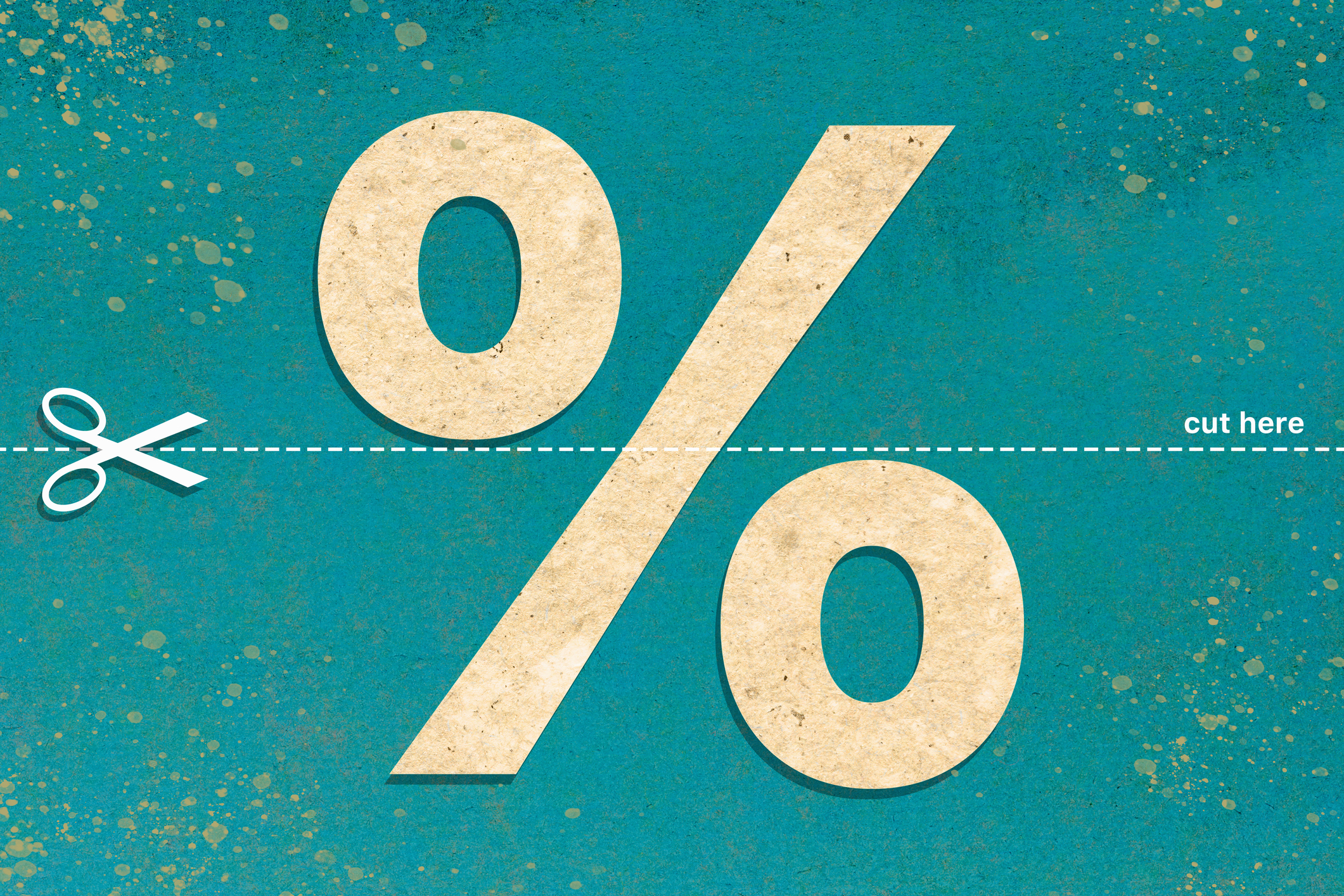Bonds Are Having a Bang-Up Year
Bonds did not do their job last year, but that was then, and this is now. Jeffrey R. Kosnett on why the picture is brightening for fixed-income investors.


The picture is fast brightening for fixed-income investors for the rest of 2023. Federal Reserve chairman Jerome Powell hinted (in his coy manner) in early May that the bank is finally done tightening credit and raising interest rates — good news for bond prices, which move in the opposite direction. Also, the stock, real estate and energy markets seem resigned to a broad economic slowdown. That implies a flight to safety.
Last month I suggested applying a “barbell” strategy to your savings or bond-fund assets, which means concentrating on short and long maturities while skipping the middle. With short-term rates up after the Fed’s May 3 announcement and long-term Treasury and investment-grade corporate bond prices on the march, as longer-term rates fall, I am extremely confident in my earlier prognostication that fixed-income devotees will recover half or more of last year’s losses by the close of 2023.
Sunshine after a perfect storm. That is a tough sell to those of you still mystified that ordinary bonds and bond funds could lose 10% or worse in a non-recession year. But 2022 was a perfect storm, starting with extremely rich bond and fund prices just as inflation and interest rates erupted. There is a hint now of irrational bond exuberance — you can roll your eyes at statements such as “this is the best yield opportunity in 15 years,” as I heard last week on some fixed-income conference calls. But if the economy does not utterly collapse, the debt-ceiling crisis ends without a default, and factors such as falling rents and low oil prices further dent the inflation indexes, bond returns will run hard to the upside. The ride might be “bumpy”— that’s the precise word I heard recently from Loomis Sayles portfolio manager Rick Raczkowski. Nonetheless, all is heading in the right direction. At the start of 2023, I predicted that a core bond fund such as Baird Aggregate Bond Fund (BAGSX) would gain 4% in net asset value in 2023 and distribute 2% to 3% in yield. Through May 3, the fund’s year-to-date total return is 4.1%, and the monthly distributions, currently an annualized 2.8%, are still on the escalator. The fund’s long duration of just over 6 (a measure of interest-rate sensitivity that implies a 6% loss if rates rise by one percentage point, or a similar gain if they fall by a point) was a big problem last year. That is now a blustery tailwind. Baird concentrates on intelligent trading and holding down costs.
From just $107.88 $24.99 for Kiplinger Personal Finance
Become a smarter, better informed investor. Subscribe from just $107.88 $24.99, plus get up to 4 Special Issues

Sign up for Kiplinger’s Free Newsletters
Profit and prosper with the best of expert advice on investing, taxes, retirement, personal finance and more - straight to your e-mail.
Profit and prosper with the best of expert advice - straight to your e-mail.
More adventurous bond managers, such as PGIM, TCW and Thornburg, could benefit even more from a barbell approach. PGIM Short-Term Corporate (PBSMX) pairs well with PGIM Total Return Bond (PDBAX). That is a barbell with rising monthly distributions and a good shot at capital gains; the two funds together sport a 3.5% year-to-date return and have yields in the 3% range. A TCW combo of Metwest Flexible Income (MWFSX) and Metropolitan West Corporate Bond (MWCSX) has a total return of 4.9% and yields of 7.7% and 3.2%. It is a marriage of low risk and higher risk, with the higher distributions coming from student loans, shipping container leases, and other high-yield fixed-rate stuff. Honestly, any first-class fund firm’s “total return” or “flexible” income fund occupies an advantageous position in the months ahead.
It’s true that few bonds or funds can yet match the 5% you can lock up for a year or two from bank CDs — my listings on May 3 showed Goldman Sachs offering 5.15% for one year and Northern Trust 5.1% for 18 months. These are not the sort of depositories involved in the current bailouts and rescues; if anything, the biggest and soundest nationwide banks are apt to profit from acquiring loans and deposits on favorable terms with the encouragement of or outright orders from the government. I am all for limiting risk if that’s what you need to do, or if earning 5% is enough for you (even if an 8% total return seems attainable). Bonds did not do their job last year, and I’m not writing revisionist history. But that was then, and this is now. So, I say the rest of this year will extend the first-half rally in most all fixed-income sectors.
Note: This item first appeared in Kiplinger's Personal Finance Magazine, a monthly, trustworthy source of advice and guidance. Subscribe to help you make more money and keep more of the money you make here.
Profit and prosper with the best of Kiplinger's advice on investing, taxes, retirement, personal finance and much more. Delivered daily. Enter your email in the box and click Sign Me Up.

Kosnett is the editor of Kiplinger Investing for Income and writes the "Cash in Hand" column for Kiplinger Personal Finance. He is an income-investing expert who covers bonds, real estate investment trusts, oil and gas income deals, dividend stocks and anything else that pays interest and dividends. He joined Kiplinger in 1981 after six years in newspapers, including the Baltimore Sun. He is a 1976 journalism graduate from the Medill School at Northwestern University and completed an executive program at the Carnegie-Mellon University business school in 1978.
-
 The Santa Claus Rally Officially Begins: Stock Market Today
The Santa Claus Rally Officially Begins: Stock Market TodayThe Santa Claus Rally is officially on as of Wednesday's closing bell, and initial returns are positive.
-
 How to Leave Different Amounts to Adult Children Without Causing a Rift
How to Leave Different Amounts to Adult Children Without Causing a RiftHere’s how to leave different amounts to adult children without causing a family rift.
-
 My Retirement Learning Curve, 1 Year In
My Retirement Learning Curve, 1 Year InA retiree checks in with what they wish they knew early on and what they've changed about their plan one year in.
-
 Why You Should Pay Attention to Company Guidance
Why You Should Pay Attention to Company GuidanceUnderstanding how corporate profit forecasts affect analysts’ estimates and stock ratings can help you make investment decisions.
-
 What Investors May Face in the New Year: Interview
What Investors May Face in the New Year: InterviewKeith Lerner, the chief market strategist and chief investment officer for Truist Wealth, speaks with Kiplinger.
-
 What to Make of a Hot IPO Market
What to Make of a Hot IPO MarketThis year's crop of initial public offerings could be even dicier than usual because of a skew toward tech and crypto.
-
 How to Position Your Portfolio for Lower Interest Rates
How to Position Your Portfolio for Lower Interest RatesThe Federal Reserve is far from done with its rate-cutting regime. This is how investors can prepare.
-
 A JPMorgan Fund Holds Its Own Thanks to a Focus on Quality
A JPMorgan Fund Holds Its Own Thanks to a Focus on QualityDespite its defensive characteristics, the JPMorgan U.S. Quality Factor holds up in good times and in bad.
-
 What Fed Rate Cuts Mean For Fixed-Income Investors
What Fed Rate Cuts Mean For Fixed-Income InvestorsThe Fed's rate-cutting campaign has the fixed-income market set for an encore of Q4 2024.
-
 Why I Trust These Trillion-Dollar Stocks
Why I Trust These Trillion-Dollar StocksThe top-heavy nature of the S&P 500 should make any investor nervous, but there's still plenty to like in these trillion-dollar stocks.
-
 Hang in There With This Value Fund
Hang in There With This Value FundPatience is required for investors in the Dodge & Cox Stock Fund, but its long-term outperformance proves it's worth the wait.